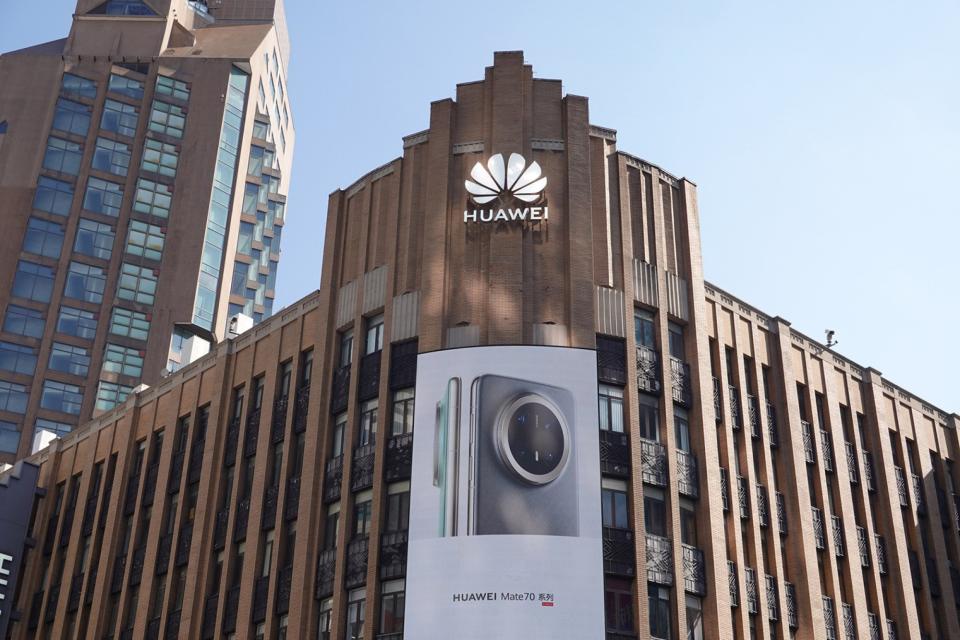Huawei Technologies’ latest series of flagship smartphones contains memory chips made by South Korean semiconductor supplier SK Hynix, according to research firm TechInsights, as Chinese-made options remain limited amid a US-led export ban on advanced chipmaking equipment to the mainland.
In a teardown report published last week, analysts at the Canadian firm said they found SK Hynix’s 12-gigabyte low-power mobile DRAM and 512GB NAND inside a Huawei Mate 70 Pro handset. The higher-end Mate 70 Pro Plus featured the same NAND and a 16GB DRAM from SK Hynix.
SK Hynix manufactured these mobile DRAM devices using 14-nanometre technology and advanced extreme ultraviolet lithography, according to TechInsights senior analyst Jeongdong Choe. NAND is a type of memory used for flash storage, while DRAM, short for dynamic random-access memories, is commonly used in smartphones and computers.
Do you have questions about the biggest topics and trends from around the world? Get the answers with SCMP Knowledge, our new platform of curated content with explainers, FAQs, analyses and infographics brought to you by our award-winning team.
Huawei declined to comment. SK Hynix did not immediately respond to a request for comment on Wednesday. Christmas Day is a public holiday in South Korea.

An ad featuring the Mate70 smartphone series outside the Huawei flagship store in Shanghai. Photo: Dreamstime/TNS alt=An ad featuring the Mate70 smartphone series outside the Huawei flagship store in Shanghai. Photo: Dreamstime/TNS>
An SK Hynix representative said last year that the company no longer did business with Huawei since the introduction of US restrictions against the Chinese firm.
While Huawei surprised the world in 2023 by launching its Mate 60 Pro smartphone powered by a locally made advanced chip, most of the brand’s P and Mate series premium handsets from last year still contained DRAM and NAND chips from SK Hynix, according to TechInsights data.
However, Chinese semiconductor manufacturers have been gaining ground, as Huawei increasingly turns to products from ChangXin Memory Technologies (CXMT) and Yangtze Memory Technologies Corporation (YMTC). The Huawei Nova 13 Pro smartphone released in October featured a CXMT DRAM and a YMTC NAND.
Researchers were “surprised” to see SK Hynix chips in the Mate 70 series, “as we expected Huawei to use memory devices from CXMT for DRAM and YMTC for NAND,” Choe said.
Unveiled in November, the Mate 70 series – comprising the Mate 70, Mate 70 Pro, Mate 70 Pro+ and Mate 70 RS – featured Kirin 9010 and 9020 mobile processors designed by Huawei’s in-house HiSilicon team.
Those chips were made by Shanghai’s Semiconductor Manufacturing International Corporation using the same 7-nm process that produced the main processors of the Mate 60 series, with no significant design improvements, according to TechInsights.
Analysts predicted that sales of the Mate 70 series would be limited by modest chip upgrades and lack of Android support. The Mate 70 line was Huawei’s first series of devices running on HarmonyOS Next, the latest iteration of the company’s self-developed mobile platform, which no longer supports Android apps.
SK Hynix started mass production of the type of DRAM chips found in the Mate 70 Pro in the second half of 2021, nine months after the US cut off Huawei’s access to chips and other US technologies such as Google services, severely impacting the Chinese giant’s smartphone business.
While SK Hynix, Samsung Electronics and US company Micron Technology have been developing DRAM chips using the fifth generation of 10-nm technology, 14-nm remains the mainstream technology in the market due to its proven reliability and higher production yields, according to Choe.
This article originally appeared in the South China Morning Post (SCMP), the most authoritative voice reporting on China and Asia for more than a century. For more SCMP stories, please explore the SCMP app or visit the SCMP’s Facebook and Twitter pages. Copyright © 2024 South China Morning Post Publishers Ltd. All rights reserved.
Copyright (c) 2024. South China Morning Post Publishers Ltd. All rights reserved.
#Huaweis #flagship #smartphones #South #Korean #memory #chips #Chinese












Leave a Reply